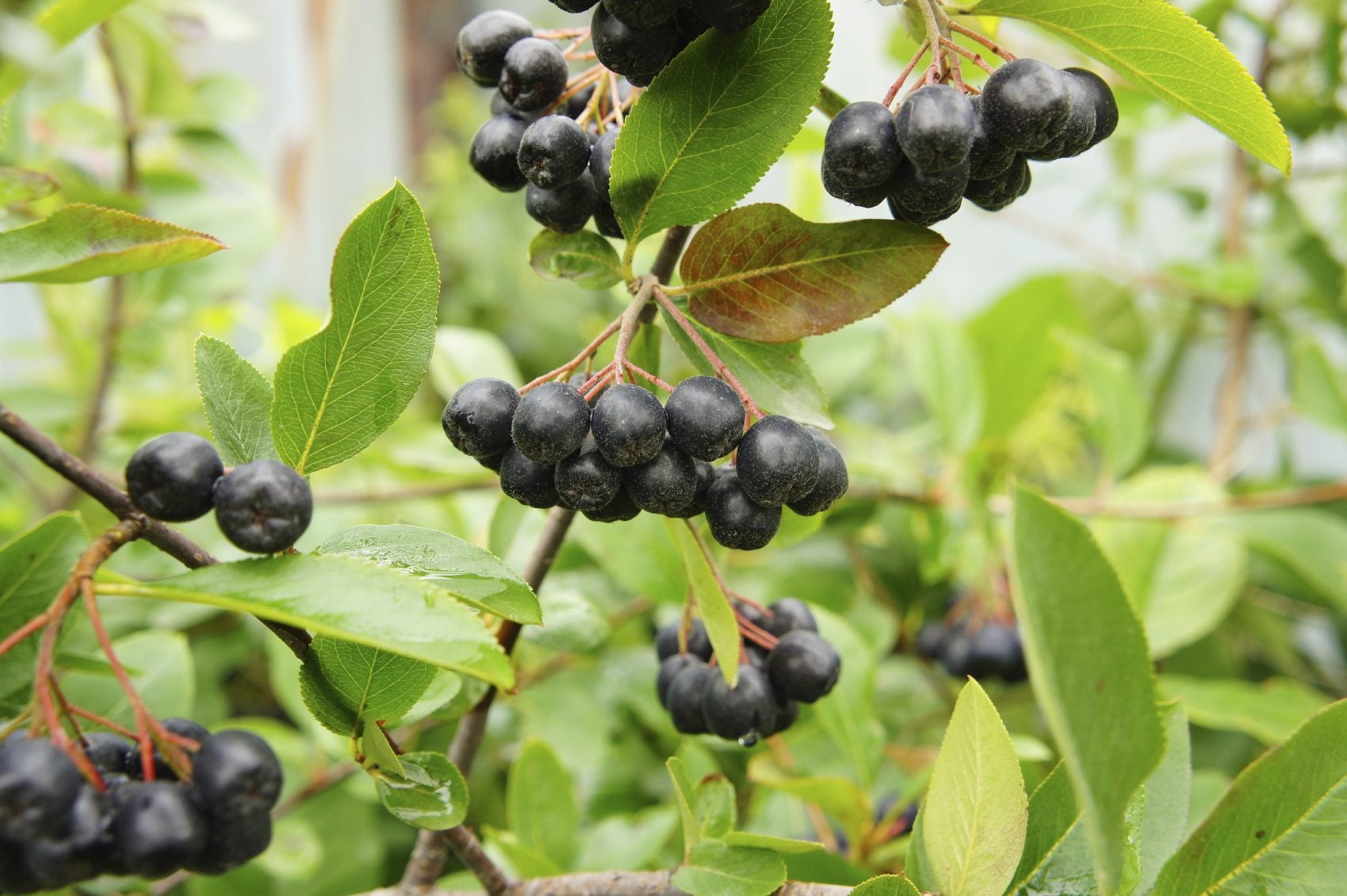Aronia Harvest Time: Tips For Harvesting And Using Chokeberries

Are aronia berries the new superfood or just a delicious berry native to eastern North America? Really, they are both. All berries contain antioxidants and have cancer fighting properties with the acai berry being the most recently touted. The beauty of aronia berries is that they are native here in the U.S., which means you can grow your own. The following article contains information regarding when to pick aronia chokeberries, as well as uses for aronia berries.
Uses for Aronia Berries
Aronia (Aronia melanocarpa), or black chokeberry, is a deciduous shrub that blooms with creamy flowers in the late spring to become small, pea sized, purple-black berries. It should be noted that black chokeberries are a different plant from the similarly named chokecherry of the Prunus genus. Aronia harvest time is in autumn coinciding with a change in the shrub’s foliage to its blazing fall hues. The berries are sometimes overlooked, as the shrub is often included in the landscape for its blossoms and foliage color, not its berries. Many animals eat aronia berries, and harvesting and using chokeberries were common amongst the Native American people. The harvesting of aronia berries was a staple food in regions of the northern Rockies, northern Plains, and boreal forest region where the fruit was pounded along with its seeds and then dried in the sun. Today, with the assistance of a strainer and some patience, you can make your own version of aronia fruit leather. Or you can make it just like the Native American people did, with the seeds included. This may not be to your liking, but the seeds themselves are high in healthy oils and protein. European settlers soon adopted the use of chokeberries, turning them into jam, jelly, wine and syrup. With their new status as a superfood, harvesting and using chokeberries is again gaining in popularity. They can be dried and later added to dishes or eaten out of hand. They can be frozen or they can be juiced, which is also the basis for making into wine. To juice aronia berries, freeze them first and then grind or crush them. This releases more juice. In Europe, aronia berries are made into syrup and then mixed with sparkling water rather like an Italian soda.
When to Pick Aronia Chokeberries
Aronia harvest time will occur in late summer into the fall, depending upon your region, but generally from the middle of August into early September. Sometimes, fruit looks ripe as early as late July, but it may not actually be ready for harvesting. If the berries have any hint of red on them, leave them to ripen further on the bush.
Harvesting Aronia Berries
Chokeberries are prolific and are, hence, easy to harvest. Simply grasp the cluster and drag your hand down, dislodging the berries in one fell swoop. Some bushes can yield as much as several gallons of berries. Two or three gallons (7.6 to 11.4 liters) of fruit can usually be gathered in an hour. Tie a bucket around your waste to leave both hands free to pick. The flavor of black chokeberries varies from bush to bush. Some are very tangy while others are minimally so and can be eaten fresh from the shrub. If you haven’t eaten them all once you are finished picking, berries can be kept longer than many other small fruits, and they also don’t crush as easily. They can be kept at room temperature for a few days or for several days longer in the refrigerator.
Gardening tips, videos, info and more delivered right to your inbox!
Sign up for the Gardening Know How newsletter today and receive a free copy of our e-book "How to Grow Delicious Tomatoes".

Amy Grant has been gardening for 30 years and writing for 15. A professional chef and caterer, Amy's area of expertise is culinary gardening.
-
 Looking For Plants To Give You The Soft And Fuzzies? Try These 5 Fuzzy Leaf Plant Options
Looking For Plants To Give You The Soft And Fuzzies? Try These 5 Fuzzy Leaf Plant OptionsLovers of texture, drama, silver foliage and tactile plants will adore these special sensory garden additions. These fuzzy leaf plant options will leave you all aglow
By Susan Albert
-
 Get Ready For A Summer Of Hummers! Grow These Full Sun Hummingbird Plants and Flowers
Get Ready For A Summer Of Hummers! Grow These Full Sun Hummingbird Plants and FlowersIf you’re lucky enough to enjoy a sunny backyard, make sure you are maxing out on your pollinator opportunities and grow these full sun hummingbird plants and flowers
By Tonya Barnett
